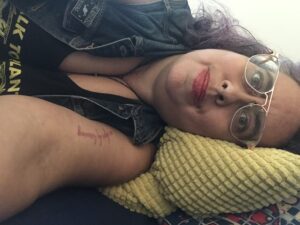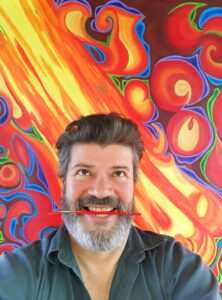By: Olivia Visser, Opinions Editor

Alice Wong
Alice Wong is an Asian-American “disabled activist, writer, editor, media maker, and consultant.” She founded the website Disability Visibility Project, a platform to share and connect disabled voices. Wong is well-known for her writing on topics like disability justice and culture. Her work has been featured in publications such as the New York Times, Vox, and Radiolab, and covered across multiple news publications. Some of her most notable publications are the books Year of the Tiger: An Activist’s Life and Disability Visibility: First-Person Stories from the Twenty-First Century. Wong’s writing emphasizes the need for better support and representation among disabled communities. She’s also an active member of Twitter’s disability community @SFdirewolf and on Instagram @disability_visibility.

Leah Lakshmi Piepzna-Samarasinha
Leah Lakshmi Piepzna-Samarasinha is a “nonbinary femme disabled writer and disability and transformative justice movement worker of Burgher and Tamil Sri Lankan, Irish and Galician/Roma ascent.” On top of their poetry, they’ve authored and co-edited ten books and have won multiple awards for their writing. Their latest publication, The Future is Disabled, asks the question: “What if, in the near future, the majority of people will be disabled — and what if that’s not a bad thing?” The Future is Disabled highlights the necessity of disability justice in the age of COVID-19 and systemic barriers that exacerbate or lead to disability. They can be found on Instagram under @leahlakshmiwrites.
Yo-Yo Lin
Yo-Yo Lin is a “Taiwanese-American, interdisciplinary media artist” who uses innovative techniques like animation, performance, and sound. According to her website, her work “reveals and re-values the complex realities of living with chronic illness and intergenerational trauma.” Yo-Yo’s art has been shown at Lincoln Centre, New York Film Festival, SXSW, and many other galleries and conferences. She blends futuristic, trance-like visuals with emotive elements like nostalgia and isolation. Her online portfolio showcases some of her art, and is definitely worth checking out.
Sharona Franklin
Sharona Franklin is a Vancouver-based “multidisciplinary disabled artist, writer, designer, consultant, and advocate.” Her work has been featured in Vogue and Pinup Magazine, among other publications. Franklin largely works with sculpture, textiles, and other visual mediums to conceptualize topics like bioethics, disability justice, and life as a chronically ill person. She publishes her artwork under the social media handles @paid.technologies, @star_seeded, @hot.crip, and @disabled_personals.

Michel Dumont
Michel Dumont is a “Métis, Two-Spirit artist descended from the Robinson-Superior Treaty Area.” He’s known for his “wearable art” which has been featured in multiple art shows and exhibitions. He also uses vintage tiles to create colourful upcycled mosaics. Dumont wrote a piece for Canadian Art that describes the challenges of Canada’s “tokenization” of BIPOC and queer creators. He stated it was only until recently that funding agencies moved beyond requiring traditional materials like “leather, sinew, and beads” for Indigenous artwork. Dumont also stresses the need for better representation of Indigenous and disabled creators. You can find him on Instagram at @madbear67.




